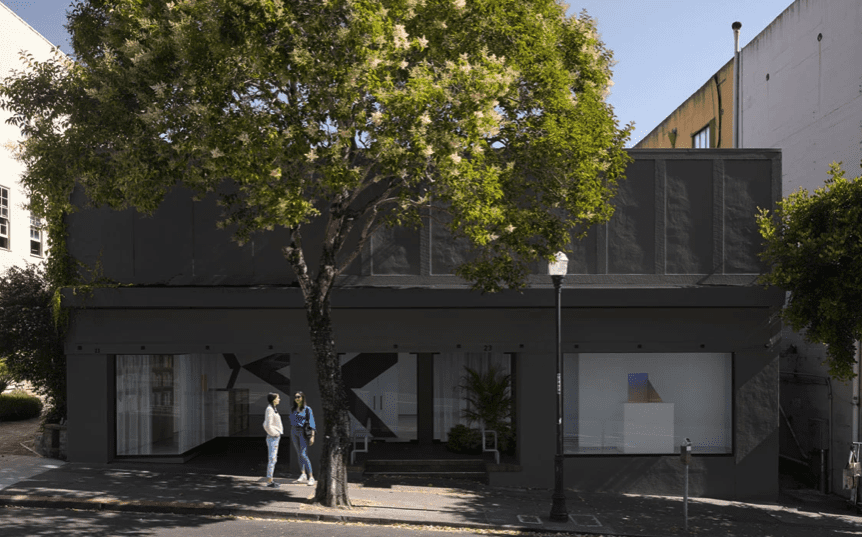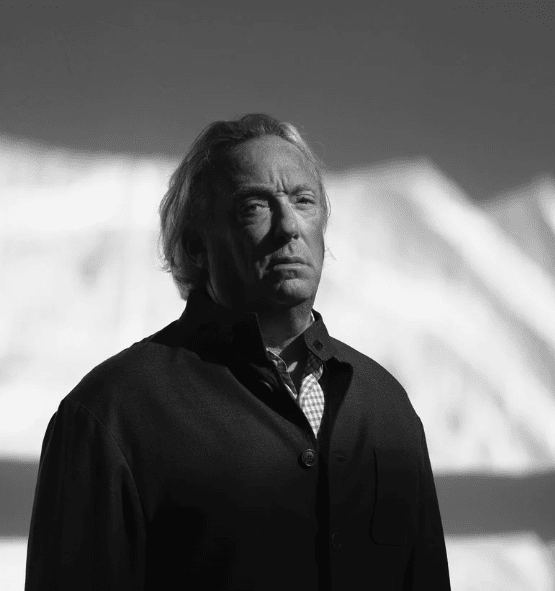

The bounty of art galleries in Mill Valley – propelled in recent years by local gallery proprietors Seager/Gray Gallery, Desta Gallery, Kim Eagles-Smith Gallery and Robert Green Fine Arts launching the Mill Valley Art Dealers Association – just took another step forward in making the 94941 an arts destination.
After nearly four decades in San Francisco, dealer Anthony Meier will leave the city for more picturesque environs nearby, according to ARTnews. Early next year, he will move his namesake gallery across the Golden Gate Bridge to Mill Valley taking over the spaces on Throckmorton that were previously occupied by Pollen + Wool and Christopher Salon.
“I think change is good,” Meier, who is president of the Art Dealers Association of America, told ARTnews. “It re-sharpens everyone’s focus and attention span, with some reevaluation of how you want to do it and where you want to do it.”
In the works for just under a year, Meier’s new location, about a 25-minute drive from its current one, will be located in a 5,200-square-foot former Studebaker car dealership, dating from 1925, ARTnews reports. The new space will more than double the gallery’s footprint, and will include a 400-square-foot art history research library that will be open to the public by appointment. The space’s renovation is being overseen by T. W. Ryan Architecture, a San Francisco– and New York–based firm that also did Christie’s San Francisco headquarters.
“Spaces with flavor, good bones, architecture, height, light are quite few far between,” Meier said. “In terms of some sweet little places, everything is six to ten miles across the bridge, but I would say Mill Valley is the sweetest: the proximity to nature, pure beauty, cool history with it being a mill town before the bridge. There’s great energy.”
The inaugural exhibition at the space, which opens on January 31, will pay tribute to the area’s local history. Titled “In the Shadow of Mt. Tam,” the show references the striking views of Mount Tamalpais (locally shortened to Mt. Tam) that Marin County is well known for. The area has long been a nexus point for artists, in particular because of its proximity to two of Northern California’s top art schools, the University of California, Davis and the now-defunct San Francisco Art Institute.
Lauren Ryan, a partner of the gallery, said that the inaugural exhibition, exploring Marin County’s rich artistic history from the 1940s through ’70s, “exemplifies what drew us to the area in the first place: natural beauty, a haven for artists, more space for artists to live and breathe and grow.”
Among the artists who have been drawn to the area at various points in their careers are Jay DeFeo, Gordon Onslow Ford, Luchita Hurtado, David Ireland, Lee Mullican, Bruce Nauman, Wolfgang Paalen, Lawrence Weiner, and most famously Etel Adnan, who lived in Marin County for much of her career. All of these artists and more will be included in the first show.
The gallery will also continue to present exhibitions by living contemporary artists that it represents, including Janine Antoni, Larry Bell, Sarah Cain, Leonardo Drew, and Teresita Fernández.
In recent months, much has been written about the health of San Francisco’s art market, after the two mega-galleries with locations in the city, Gagosian and Pace, announced that they would shutter those spaces. A New York Times article published in August described the city’s arts scene as “suffering” and “increasingly being overshadowed by the vibrant scene in Los Angeles.” In response to that article, members of the San Francisco arts community told ARTnews that the scene isn’t dying out anytime soon.
Both Meier and Ryan disagreed with the Times’s characterization of the Bay Area arts scene and said their gallery’s move to Mill Valley represents a strong commitment to the region and the arts community that the gallery has been a part of since 1984.
“I moved here from New York 10 years ago, knowing very little about the Bay Area,” Ryan said. “I have to say it’s thriving now more than ever. There’s a community here that’s not as visible to the outside world and is why perhaps maybe the blue-chip galleries have come and gone before they had time to establish any roots. We see it much more positively than the New York Times article presented.”
Meier added, “I see the sun shining and very few rain clouds in the forecast.”
